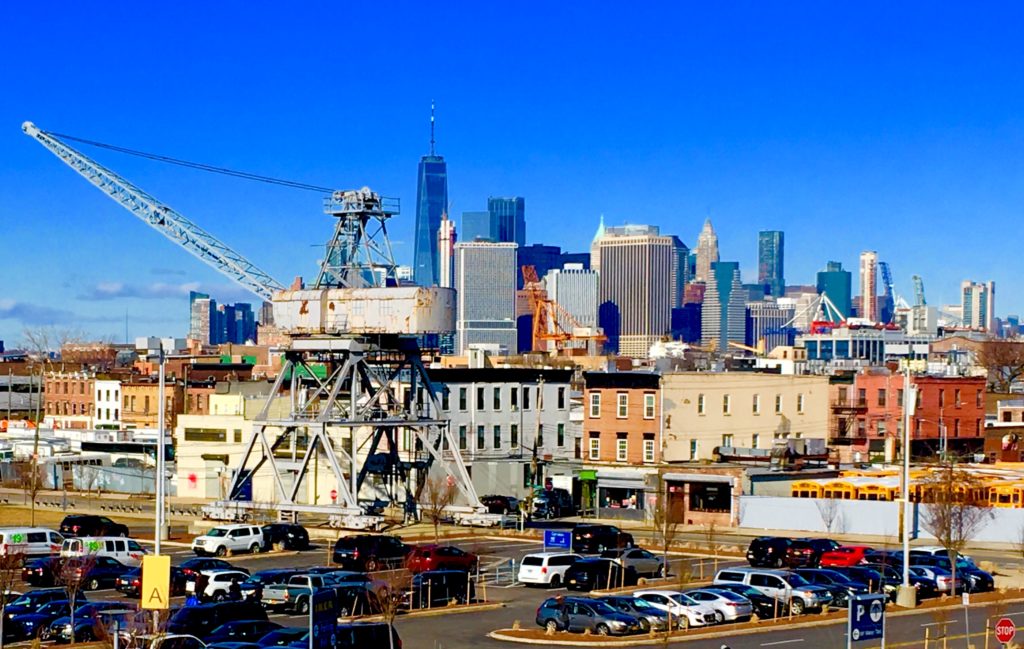OPINION: BQX could bring more local tourism to Red Hook

Here's Red Hook, with the World Trade Center rising behind it, as seen from IKEA's parking lot. Eagle file photo by Lore Croghan
The back-and-forth debate over the proposed BQX streetcar, a mass transit improvement that wouldn’t be developed by the MTA, reminds me somewhat of the Roosevelt Island Tram, which was likewise developed without the aid of the metro area’s transit authority.
Almost everyone in New York City has ridden on the Tramway at one time or another. By all rights, however, the Tramway shouldn’t be here anymore at all.
The Roosevelt Island Tramway was built in 1976 as a way to shuttle residents of the new housing developments on the island to Manhattan. The older trolley tracks over the Queensboro Bridge, which stopped mid-bridge at an elevator that took people down to the island, had by then deteriorated too much to be renovated.
